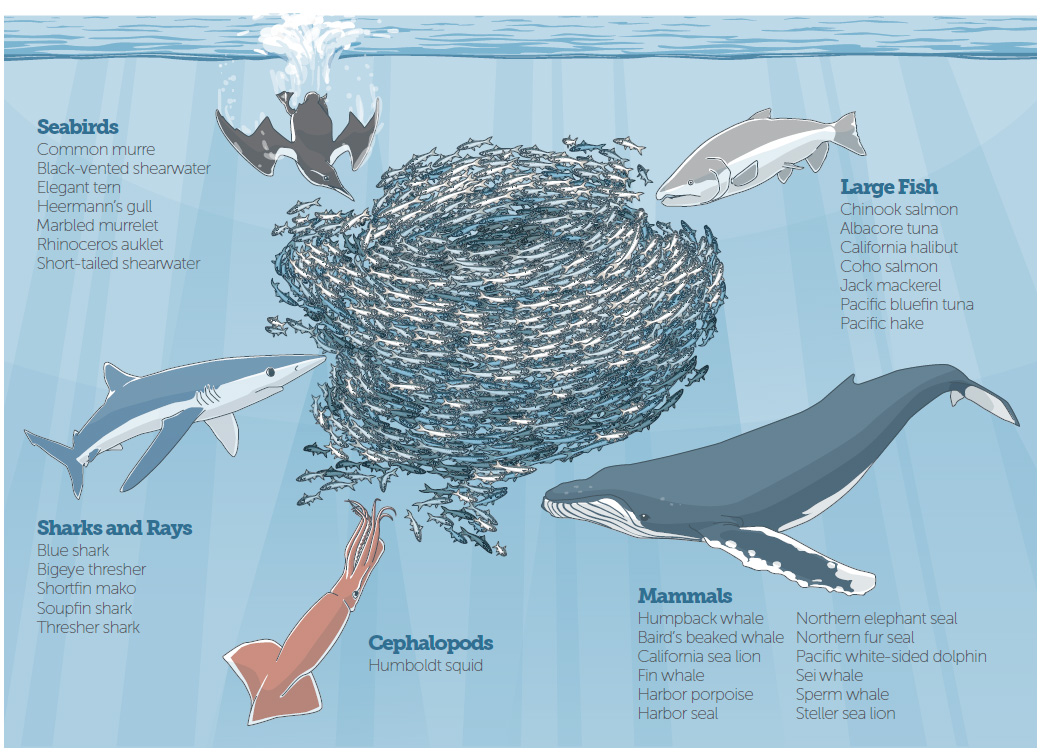Bad News on the West Coast: Pacific Sardines Are Collapsing
The population of Pacific sardines, a crucial forage fish for marine life along the U.S. West Coast, has dwindled to the point that it can no longer sustain a commercial fishery, according to a preliminary assessment by scientists advising West Coast fishery managers.
The ongoing collapse is bad news for ocean wildlife, as well as fishermen and others who rely on a healthy ocean.
This is a major cause for concern, but it shouldn’t come as a complete surprise. In 2012, two government scientists predicted we would end up in exactly this position, finding a parallel with the last major collapse in the middle of the 20th century. Three years ago, the scientists wrote that “all indicators show that the northern sardine stock off the west coast of North America is declining steeply again and that imminent collapse is likely.”
That prediction turned out to be right.
A panel of scientists advising the Pacific Fishery Management Council is reviewing the draft assessment today, March 6, in Vancouver, Washington. In April, the scientists will make a recommendation to the full council, which has already established plans for an automatic cutoff of commercial fishing for sardines when the population’s biomass estimate falls below 150,000 metric tons. In recent years, the stock size has fallen steadily, from 1.4 million metric tons in 2007 to 300,000 metric tons in the last official stock assessment in August of 2014.
Now, the new draft assessment projects that the population will be less than 150,000 metric tons as of July 1, the beginning of the new fishing season.
Sardines are small individually, but they are a big deal for the ocean food web. They form large schools known as bait balls that provide an oil-rich source of protein for many species of seabirds, marine mammals, and bigger fish, including salmon and tuna. The estimated size of the West Coast sardine population has fluctuated from several million tons— based on sediment records gathered on the seabed off Southern California—to less than 5,000 tons in the 1960s following the last major collapse.
If the new assessment holds up to scientific review, fishery managers should follow through in April on their harvest guideline protocols and suspend fishing on sardines for the 2015 season. Doing so would give the population a chance to recover as ocean conditions improve.
The sardine fishery has historically been a major source of revenue for California’s commercial fishing fleet, dating back to the era chronicled in John Steinbeck’s masterpiece Cannery Row in 1945. Still, it would not be fair to blame the current collapse on fishing.
We know that sardine populations fluctuate widely with decades-long shifts in ocean conditions. Sardines grow scarce with shifts to cooler water. However, when the population reaches this extreme low level, it is a scientific no-brainer that fishing should be curtailed so sardines don’t continue to decline and perhaps reach the point of no return.
These little fish are a big deal for a vibrant ocean. Fishery managers will be making the right decision by agreeing to strengthen protections for sardines at this critical time.
Paul Shively manages ocean conservation efforts along the West Coast for The Pew Charitable Trusts.












